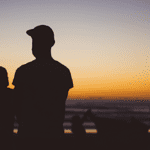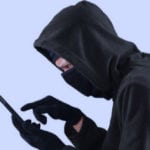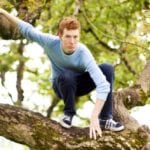 Miscellaneous
Miscellaneous  Miscellaneous
Miscellaneous  History
History 10 Huge Historical Events That Happened on Christmas Eve
 Music
Music 10 Surprising Origin Stories of Your Favorite Holiday Songs
 History
History 10 Less Than Jolly Events That Occurred on December 25
 Weird Stuff
Weird Stuff 10 Funny Ways That Researchers Overthink Christmas
 Politics
Politics 10 Political Scandals That Sent Crowds Into the Streets
 Weird Stuff
Weird Stuff Ten Bizarre Facts About The Doge Meme
 Our World
Our World 10 Ways Your Christmas Tree Is More Lit Than You Think
 Movies and TV
Movies and TV The 10 Coolest Stars to Set Sail on The Love Boat
 History
History 10 Things You Didn’t Know About the American National Anthem
 Miscellaneous
Miscellaneous Top 10 Things Crypto Was Supposed to Change & What Actually Did
 History
History 10 Huge Historical Events That Happened on Christmas Eve
 Music
Music 10 Surprising Origin Stories of Your Favorite Holiday Songs
Who's Behind Listverse?

Jamie Frater
Head Editor
Jamie founded Listverse due to an insatiable desire to share fascinating, obscure, and bizarre facts. He has been a guest speaker on numerous national radio and television stations and is a five time published author.
More About Us History
History 10 Less Than Jolly Events That Occurred on December 25
 Weird Stuff
Weird Stuff 10 Funny Ways That Researchers Overthink Christmas
 Politics
Politics 10 Political Scandals That Sent Crowds Into the Streets
 Weird Stuff
Weird Stuff Ten Bizarre Facts About The Doge Meme
 Our World
Our World 10 Ways Your Christmas Tree Is More Lit Than You Think
 Movies and TV
Movies and TV The 10 Coolest Stars to Set Sail on The Love Boat
 History
History 10 Things You Didn’t Know About the American National Anthem
10 Forgotten Nazi War Criminals
Most people who know the history of World War II and the Holocaust are familiar with major Nazi war criminals—Hitler, Himmler, Heydrich, Goering, and Eichmann. Those Nazis are not on this list. This list is for those who committed major war crimes but are often overlooked or forgotten.
For instance, by far the most famous Nazi doctor was Josef Mengele, but there were a number of doctors who were just as evil. Also often forgotten are the German industrialists who procured slave labor through the SS and worked the vast majority of their workers to death. Finally, there are a few who should have been tried at the International Military Tribunal at Nuremberg but were absent due to various circumstances.
10Friedrich Flick
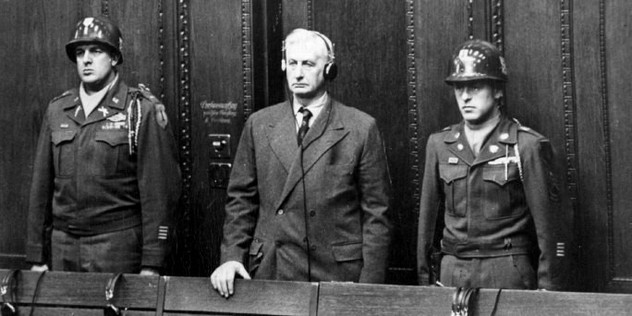
Friedrich Flick was a major industrialist in Germany. By the 1930s, he became the director of United Steelworks—the largest steel firm in Germany at the time. A major supporter of the Nazi Party, he donated seven million marks to the party, as well as providing 10,000 marks a year for the SS. During World War II, Flick profited enormously through the use of slave labor provided by the SS. The slaves numbered at 48,000, and 80 percent are estimated to have died due to brutal treatment.
Flick was tried by an American court in Nuremberg and sentenced to only seven years imprisonment. He was released in January 1951 by High Commissioner John J. McCloy, who was interested in revitalizing German steel production. Flick was subsequently estimated to be the wealthiest man in Germany and the fifth wealthiest man in the world. He died in 1972, never having paid a cent to the families of the slaves who died so he could be filthy rich.
9Alfried Krupp
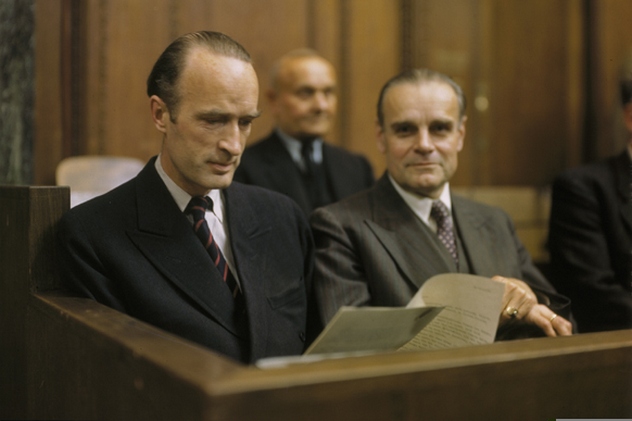
Alfried Krupp was the son of steel industrialist Gustav Krupp. Alfried ran the Krupp factories during World War II, supplying tanks, arms, and munitions to the German military. In 1943, he was appointed head of the department of Mining and Armaments. Krupp was a heartless slave driver, initiating the request to the SS for slave labor. He actively cooperated with the SS to procure labor from Auschwitz. Approximately 100,000 slave laborers from concentration camps worked in his factories, with around 70 percent of them dying as a result of horrible conditions and the brutal treatment from SS guards.
In 1948, Krupp was tried by an American court. He was sentenced to 12 years imprisonment and deprived of his wealth. However, in 1951, High Commissioner John J. McCloy not only pardoned him but returned his assets. In 1953, Alfried again became head of the firm and restored the Krupp company to its former prestige. He died in 1967, the last of the Krupp family to run the firm.
8Bruno Tesch
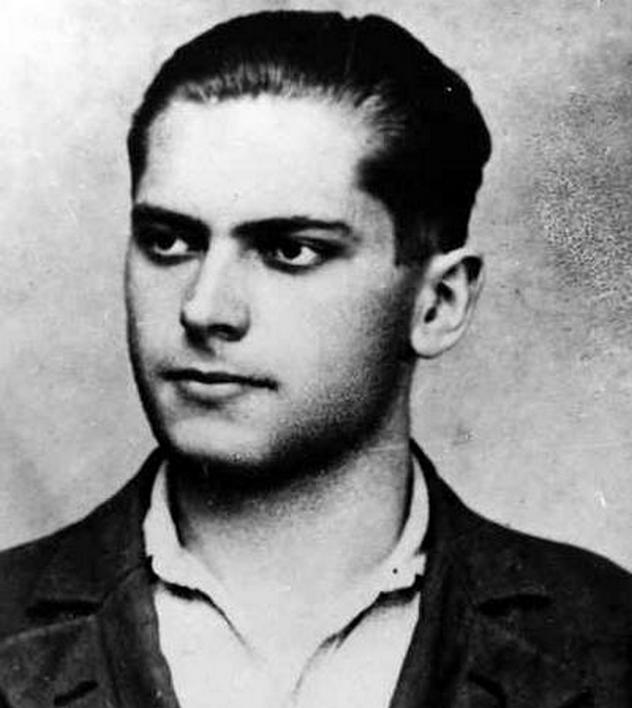
A chemist by profession, Tesch was the co-inventor of the Zyklon B pesticide. By 1942, he was the sole owner and director of the firm Tesch & Stabenow—a major supplier of Zyklon B to Auschwitz, Sachsenhausen, and Neuengamme camps. Most of the gas went to Auschwitz, where it was used to kill primarily Jewish inmates. Tesch not only knew what the Zyklon B was being used for, but he had also recommended its use on humans as a substitute for shooting, and he trained SS soldiers in its use against humans. Tesch thus served as a critical accomplice in genocide.
After the war, Tesch was tried in a British court, along with his aide Karl Weinbacher and the firm’s chemist, Joachim Drosihn. The court found that Drosihn had no role in Zyklon B distribution and thus no knowledge of its use on humans, but Tesch and Weinbacher were found guilty, sentenced to death, and hanged in 1946.
7Franz Boehme

Wehrmacht General Franz Boehme served as Hitler’s commanding general in Serbia, as well as the military commander of German forces in Norway. He stood out for his brutality. In Serbia, there was constant partisan resistance to the Nazi occupation. While serving there, Boehme not only vigorously conducted reprisals against civilians, but he upped the ante to a ratio of 100 civilians executed for every German soldier killed. For every German soldier wounded, 50 civilians were to be executed. All Jews and communists were ordered imprisoned. Thus, the “Final Solution” was implemented in Serbia through reprisal killings.
After being captured in Norway, Boehme was to be tried at the Hostages Trial. However, in 1947, when it became clear that he was going to be extradited to Yugoslavia where he would have undoubtedly been executed, Boehme leaped over a third-floor railing of his prison. He died two hours later from the resulting skull fracture.
6Ludwig Fischer
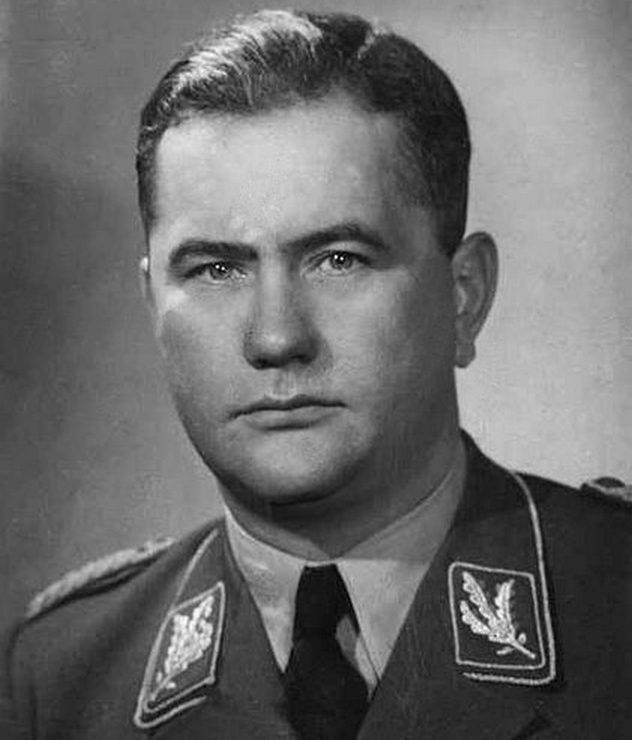
Serving as Governor of the Warsaw district of Nazi-occupied Poland, Ludwig Fischer was a vicious administrator. He initiated terror campaigns against Poles and Jews and ordered the establishment of the Warsaw Ghetto, where Jews were rounded up and imprisoned. The conditions in the ghetto were horrible. It was overcrowded, and disease and starvation ran rampant. With a ration of only 184 calories for Jews, 50 percent of the ghetto’s population was starving to death, with 30 percent in a consistent state of starvation. It was Fischer’s policy that “The Jews will die from hunger and destitution and a cemetery will remain of the Jewish question.” During 1942 and 1943, he called for the liquidation of the ghetto, which eventually happened in 1944 after the suppression of the Warsaw Uprising. The surviving Jews of the ghetto were then sent to extermination camps.
After World War II, Fischer was captured and extradited to Poland, where he was sentenced to death and hanged in 1947.
5Horst Schumann

SS Major Dr. Horst Schumann, like many of the killers of Auschwitz and other death camps, got his start in the “Aktion T4” euthanasia program. After he arrived to Auschwitz, he employed X-ray sterilizations on men and women, which caused severe burns on the torso, groin, and buttocks. Most of the subjects either died from radiation or were subsequently gassed because the radiation burns prevented them from working. He also injected typhus-infected blood into people and then tried to cure them.
After the war, Schumann fled to Egypt and then Sudan. However, after an Auschwitz survivor recognized him, Schumann fled to Ghana, where he was given protection by President Kwame Nkrumah. After Nkrumah was ousted in 1966, Schumann was extradited to West Germany, but legal wrangling, combined with Schumann’s heart condition and general poor health, resulted in his release in 1972. The case was not pursued further, and he died in 1983, never having stood trial for his crimes.
4Carl Clauberg
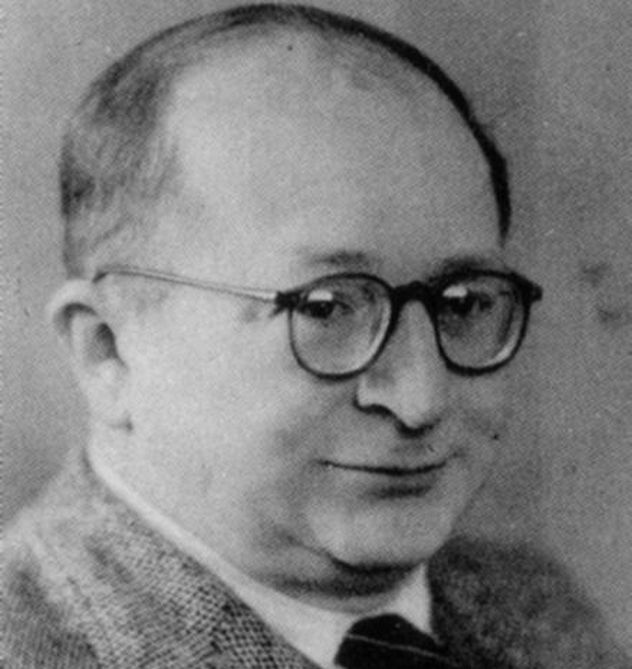
Dr. Carl Clauberg was one of the most vile Nazi doctors. Before the war, he was a respected professor of gynecology, researching female fertility hormones at the University of Konigsberg. Eventually, Clauberg asked SS General Heinrich Himmler if he could be allowed to sterilize women in concentration camps. Himmler agreed and assigned the doctor to Auschwitz. There, Clauberg worked alongside the infamous Dr. Josef Mengele and was arguably just as murderous. Dr. Clauberg injected formaldehyde into thousands of women’s uteri without anesthetics. This produced inflammation that shut the Fallopian tubes. Many women died from this medical experimentation, while others were killed for autopsies. Clauberg also conducted artificial insemination experiments on 300 women. He reportedly taunted the women, saying that he had inseminated them with animal sperm and that monsters were growing in their wombs.
Unlike Dr. Mengele, Clauberg went to trial in 1948 and was sentenced to 25 years imprisonment by a Soviet court. Although he was released in 1955, he was soon arrested by the West German authorities after bragging about his “scientific achievements” at Auschwitz in a televised press conference. Clauberg died in jail in 1957, before a new trial could begin.
3Christian Wirth

SS Major Christian Wirth stood out for his endless capacity for evil and cruelty. At first, Wirth was placed in charge of the T4 operation, which gassed the mentally and physically disabled. Wirth was then appointed the Commandant of Belzec and, later, the Inspector of the Aktion Reinhard extermination camps of Belzec, Sobibor, and Treblinka. At these camps, he forced Jews into gas chambers using a whip. He was called “Christian the Terrible” by SS guards, and everyone was subject to the wrath of Wirth and his whip. His subordinate and fellow mass murderer Franz Stangl said of him: “Wirth was a gross and florid man and my heart sank when I met him. He stayed at Hartheim for several days that time, and came back often. Whenever he was there, he addressed us daily at lunch, with an awful crude language.”
Belzec survivor Rudolf Reder described Wirth as a “tall, broad shouldered man in his middle 40’s with a vulgar face. He was a born criminal, ‘The extreme beast.’ ” Wirth’s cruelty was especially demonstrated when he buried children and infants alive in a large pit. His immense evil set the tone for the operation of the camps. The SS leadership, possibly eager to get rid of Wirth and his fellow executioners, reassigned them to extremely dangerous anti-partisan combat in Yugoslavia. Wirth was killed by partisans in a roadside attack in 1944.
2Arthur Greiser
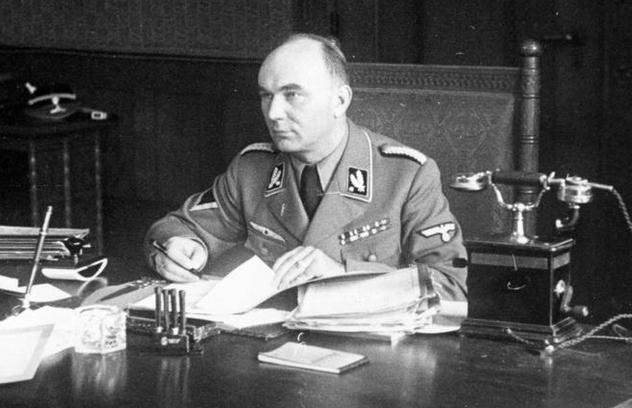
As District Leader of Western Poland, Arthur Greiser stands out as one of the most brutal Nazi leaders. He fought for influence in his region and chose to formulate policies on Jews and Poles himself. He sought to make Western Poland a home for Germans and made room by kicking Jews and Poles out of their homes and resettling hundreds of thousands of Germans. He was the first to initiate mass gassings of Jews in occupied Europe and generally treated Poles with extreme inhumanity. Greiser’s attitude was described by his housemaid as such: “And the Poles, he treated them with great contempt. For him the Poles were slaves, good for nothing but work.”
The Chelmno death camp fell under Greiser’s jurisdiction. In a letter to Heinrich Himmler, Greiser cruelly advocated for tubercular Poles to be sent to the camp for “special treatment.” His treatment of the Poles was unlike that of the District Leader of Danzig-West Prussia, Albert Forster, who adopted an assimilation policy in which non-Jewish Poles were considered Germans. This did not bode well for Greiser’s “following orders” defense when he was tried by a Polish court after the war. In 1946, Gresier was sentenced to death and publicly hanged.
1Erich Koch
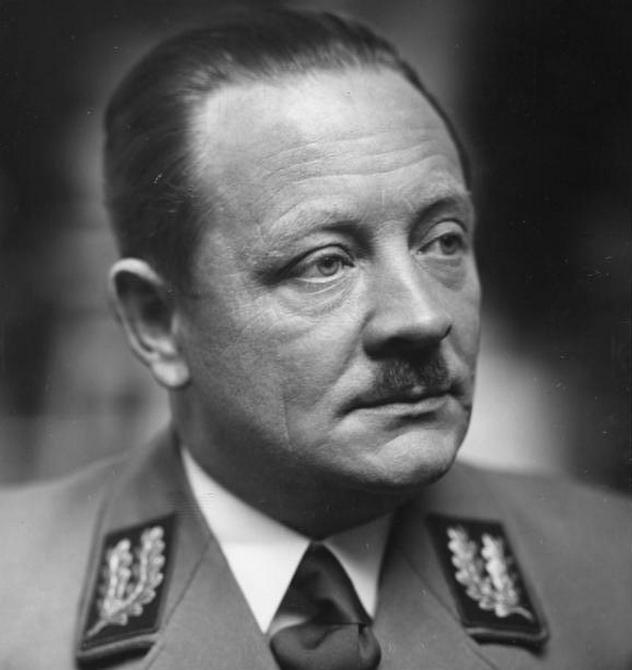
Erich Koch was the District Leader of Prussia. He was responsible for the deaths of 400,000 Poles as Commissioner of the Bialystok region from 1941 to 1945. When the German army entered the Ukraine, he was appointed the area’s Reich Commissioner, serving from 1941 to 1943. Although the Ukrainians were initially glad to be free of Stalin, Koch soon made them pine for the Soviet days. His first act as administrator was to close the schools, stating “Ukrainian children need no schools. What they have to learn will be taught them by their German masters.”
His attitude toward the Ukrainians was one of a master to a slave. He once said, “If I find a Ukrainian who is worthy of sitting at the same table with me, I must have him shot.” Four million Ukrainians and Jews perished under Koch’s tyrannical regime. Two million were sent to Germany for slave labor. He also had one of Kiev’s most famous churches blown up just to demoralize the population, an action which horrified Propaganda Minister Joseph Goebbels, who correctly believed such actions increased armed resistance.
After World War II, Koch managed to live in hiding in Hamburg, until he was apprehended in 1949. He was extradited to Poland and, after many delays, he was convicted in 1959 of the extermination of 400,000 Poles and sentenced to death. Due to his extremely poor health, his sentence was commuted to life imprisonment later that year. Koch, however, managed to recover and lived to be 90, dying in prison in 1986. Had Koch been apprehended in 1945, he would have probably been tried at Nuremberg with Goering and the other major Nazis.
Mike H. is a student whose interests in history and politics know no bounds.

